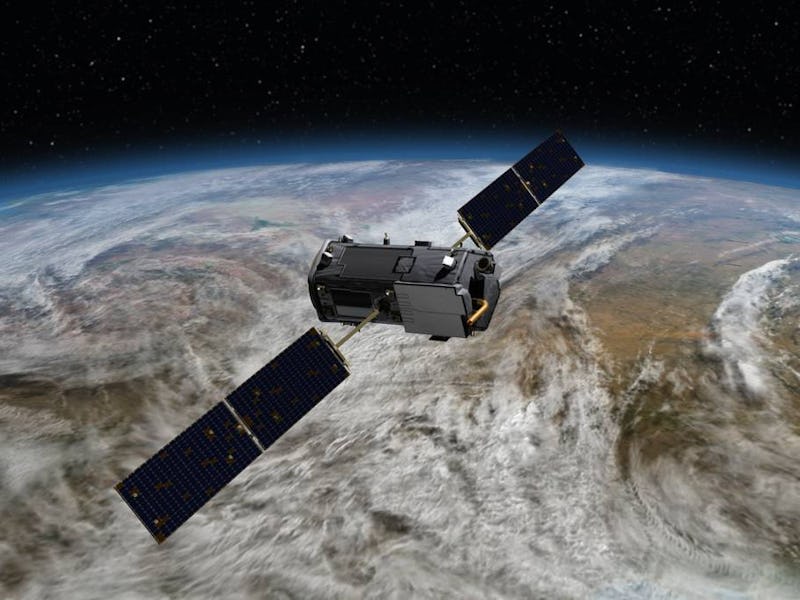On Tuesday, NASA acting Administrator Robert Lightfoot addressed the 2018 budget for space exploration, explaining that beloved Mars missions like the InSight Mars lander and the rover to be launched in 2020 were saved from the chopping block.
But other projects didn’t fare so well. Namely, five scientific efforts to better understand our climate here on Earth were eliminated, including the Orbiting Carbon Observatory-3, or OCO-3, which never got off the ground.
The OCO-3 was going to allow scientists to “watch the Earth breathe from space” by measuring carbon dioxide levels from 249 miles above the surface, aboard the International Space Station. It wasn’t much to look at, based on illustration NASA offered.
The Orbiting Carbon Observatory-3.
But its work was important. It would have investigated “important questions about the distribution of carbon dioxide on Earth as it relates to growing urban populations and changing patterns of fossil fuel combustion.”
The mission was meant to accompany the OCO-2, launched in July 2014, which records how much sunlight is reflected off the CO2 molecules in an air column using spectral analysis from three different wavelengths. OCO-3 would have provided additional visibility to the overall OCO research, specifically by measuring the temporal variability of CO2 over an annual cycle, or the rise and fall of CO2 as seasons change. This would allow for a full picture of how Earth’s climate is affected by rising CO2 levels.
The Orbiting Carbon Observatory-2, launched in July 2014.
OCO-3 would have had 3 modes: Nadir, which would allow it to view the ground directly below the ISS; Glint, which would look at how sunlight reflects on the surface, particularly over the ocean; and Target mode, which would have pointed directly at carbon capturing sites all over the globe to facilitate missions on the ground.
The OCO-3 would have been in operation for three years and helped connect the many missing links within the carbon cycle. Although climate research may seem extensive, it has hardly scratched the surface of the entire global phenomenon. To truly understand what the human race is working with and to predict the effects of climate change on the planet, NASA’s Earth Science Missions are imperative. Although plenty of these were cut, including the Plankton, Aerosol, Cloud, ocean Ecosystem, Climate Absolute Radiance and Refractivity Observatory Pathfinder, and the Radiation Budget Instrument, 18 missions did survive … for now.
“The program of exploration and discovery we propose with this budget should be a source of pride for all Americans,” Lightfoot said in his announcement. “The impact of NASA’s work is immense, and we have great momentum and support to keep moving ahead.”
